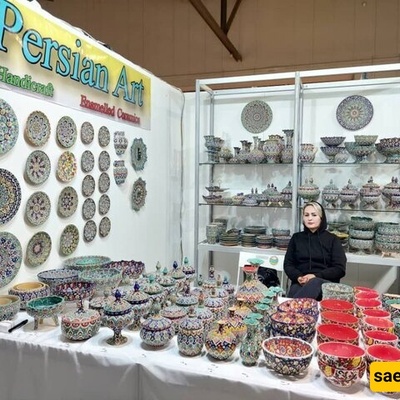The Damaru instrument is made from two human skulls, and the more surprising fact is that according to the religious texts of the people of this region, Tibet, it is preferred to use the skulls of a sixteen-year-old boy and a twelve-year-old girl to make this instrument. In this section of Saed News, we introduce you to the Damaru instrument.

The damaru is a type of percussion instrument from the membranophone family in the Indian subcontinent. This instrument is associated with one of the Hindu gods, Shiva, and as shown in statues of this Hindu deity, he holds a damaru in his right hand; symbolizing that the creative energy sound emitted from this instrument fills the entire universe. Even today, Hindu worshippers and yogis play the damaru in Shiva temples.
Appearance and Structure of the Damaru
The hourglass-shaped body of the damaru is made from a hard wood. Both ends of the instrument are covered with circular wooden or reed membranes, slightly larger than the drum’s openings. These membranes are connected by a colored cotton string arranged in a V shape. On one side, the string passes through a single hole, while on the other side it passes alternately through two holes.
The other end of the string is tied around the main opening and the middle section of the instrument to increase tension. Two small four-inch (10 cm) strings are attached to the central ring, each ending with small beads. When the instrument is played, these beads strike the sides of the drum, acting as percussion beaters.

How to Play the Damaru
The player holds the damaru horizontally in one hand, gripping the central string firmly between the thumb and index finger. To produce sound, the instrument must be continuously rotated using wrist and arm movements, causing the beads to strike the drumheads with centrifugal force and create a rattling sound. By pulling the central string while playing, the player can produce a range of short, varied tones.
Origin / History / Evolution of the Damaru
Exact historical details about the damaru’s origin are unclear, but bronze statues found in temples depict the god Shiva holding the damaru, suggesting its origin dates back to around the 10th century. Shortly after, another hourglass-shaped instrument called the tad-ranga was developed inspired by the damaru and used in tantric Buddhist temples. Thus, it can be concluded that the damaru has been linked to the religious life of Southeast Asia for over a thousand years. However, the exact historical period of its use in the non-religious life of Hindus remains unknown.
Summary
The damaru is a classical percussion instrument historically popular among the indigenous people of India. Its main body is usually made of wood, metal, or bone, with both ends covered by animal skins (especially goat skin). These skins are connected by strings made of cotton, leather, or hemp.

